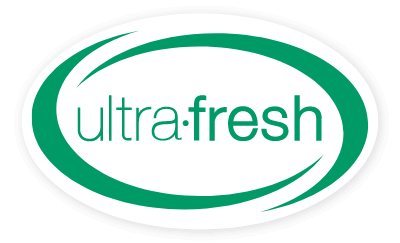Updated September 3, 2019
Before we answer the questions "Is black mold dangerous" and "What are the symptoms of black mold?", let's learn a little more about toxic mold...
What is Black Mold?
Have you recently spotted dark, clustered growths in moist areas of your household like the bathroom, kitchen, or basement?
Have you found yourself coughing or sneezing when entering these particular rooms?
If yes, your home could have a black mold problem that requires immediate attention.
"Black mold" is a common term that is used to describe Stachybotrys chartarum which is the scientific name of one of the most toxic mold species – and if you have a moisture problem, there is a chance it could be living in your home.
What Does Black Mold Look Like?
Black mold is greenish-black in colour. It is usually accompanied by a distinctive odour described as being musty and earthy, similar to rotting leaves or dirt.
Black mold is a fungus that requires moisture to survive and reproduce; it usually thrives in warm, humid conditions. The ideal temperature for growth is around 20 degrees Celsius.
Unfortunately, this species of mold can also survive in colder temperatures during the winter months. Cold and wet conditions provide enough nourishment for black mold to continue to grow and multiply throughout the winter.
Black mold often appears to be slimy in appearance and texture. However, if its water source has run out, it can also appear slightly discoloured, even grey, with a dry, powdery texture.
Where Does Black Mold Grow?
Black mold can grow on pretty much any surface, given that it has a source of water or moisture in that area. This fungus thrives in moist, warm environments that are high in cellulose (organic materials) and low in nitrogen.
Some common household surfaces that can support the growth of black mold include drywall, floorboards, ceiling tiles, insulation materials, furniture, and carpets.
[caption id="attachment_3432" align="aligncenter" width="800"]

Black mold around a window sill
Black mold is most commonly found near sources of water, for example in the bathroom or kitchen. When an area in the household is wet and remains so for any period of time, the moisture weakens the area and creates a prime location for mold growth.
Symptoms of Black Mold
Is black mold dangerous?
Out of more than 2,000 different species of molds that exist on the Earth, black mold, also known as the “invisible killer,” is one of the most dangerous due to its’ toxicity.
Under the right conditions, Stachybotrys chartarum produces mycotoxins which are toxic secondary substances that can cause harm to living things (humans, animals, and plants alike).
Any or a combination of the following symptoms of black mold may be experienced when these mycotoxins are ingested or inhaled:
- Eye irritation
- Sneezing
- Fever
- Rashes
- Chronic headaches
- Chronic fatigue
In more severe cases, symptoms of black mold exposure might also include:
- Respiratory distress
- Difficulty breathing
- Nausea
- Vomiting
- Asthma
- Kidney or bladder discomfort(s)
- Immune system suppression
Keep in mind that black mold symptoms can be amplified for infants, elderly persons, and anyone who already suffers from any sort of respiratory infection or illness.
How to Get Rid of Black Mold
Trying to remove a black mold infestation from your home DIY-style is not advised; if you don’t use the proper techniques and equipment, you run the risk of disturbing the mold colony and releasing millions of mycotoxins into the air.
Doing this could worsen your homes’ indoor air quality and cause serious damage.
Since black mold is potentially dangerous, it is safer to contact a professional mold remediation company. Alternatively, you can ask for help from an individual with experience to get rid of black mold for you.
Professionals will be able to tackle the contamination with advanced knowledge and equipment. Ultimately, this ensures your household remains a safe and healthy place to live without risking further damage to your home, family, or pets.
How Ultra-Fresh Antimicrobial Additives Can Help
Ultra-Fresh is commonly used by manufacturers of home and building products to protect materials against the deleterious effects of microbial growth.
End-use items such as flooring (LVT, carpeting, hardwood flooring, etc.), wall coverings, painted surfaces, home textiles (curtains, bedding, upholstery), and air filters become resistant to material breakdown, odors, and staining caused by a broad range of bacteria, mold, and mildew.
Check out some of the companies and brands we work with.
Ultra-Fresh is not intended to create a healthier environment or to cover up an existing moisture issue in your house.
Ultra-Fresh antimicrobial technology is meant to help keep your materials free of fungal growth. This means if black mold develops elsewhere in your home, your ultra-fresh treated items will resist fungal attack.
Learn more about us or contact us for more information.
More Interesting Reads:
- Difference Between Antimicrobial and Antibacterial
- Shocking Reasons why There is Mold in Your Dishwasher
- Why Your Car AC Smells Bad and How to Fix It
- More blog articles...
